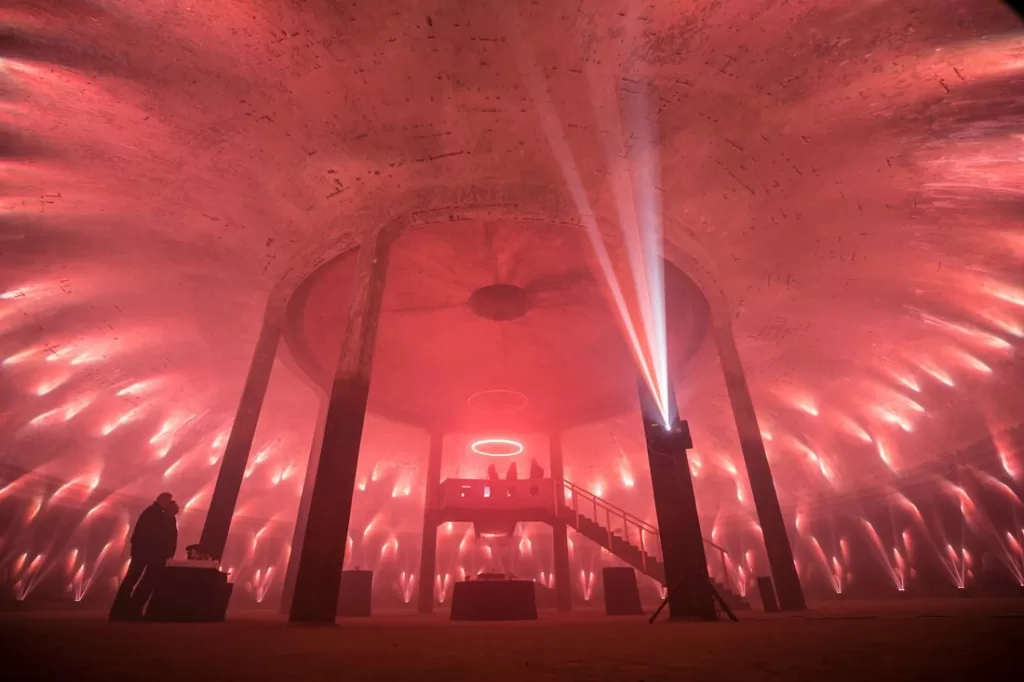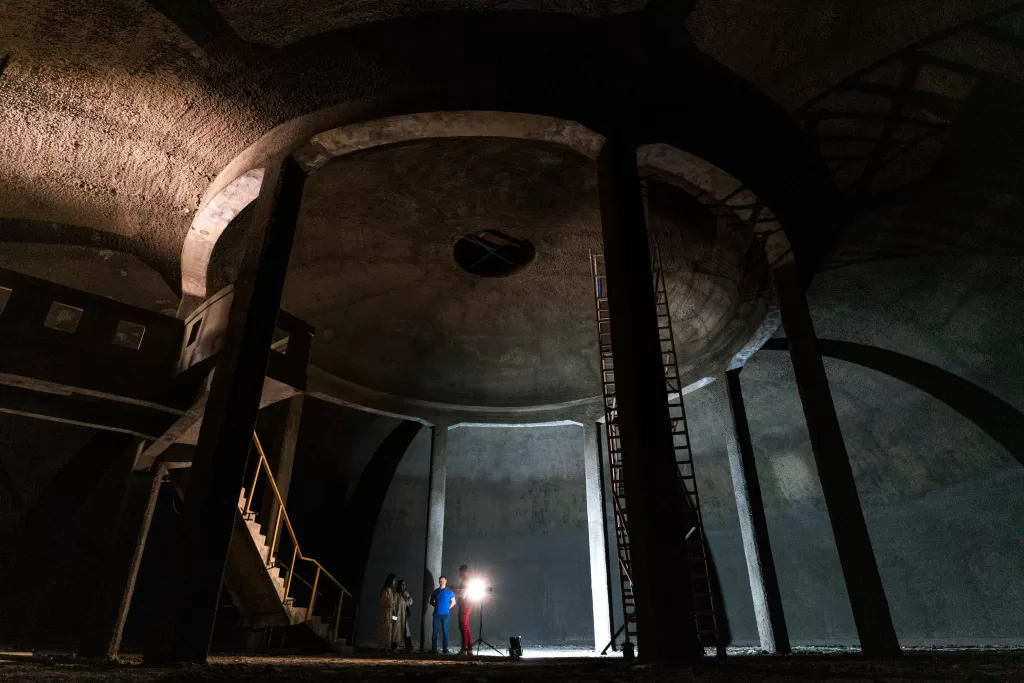Liepkalnis Water Storage, one of the most interesting underground structures in Vilnius, is opened. Energy and Technology Museum organizes guided tours, the new space is open for concerts, cinema and art – the impressive acoustics and the green outdoor area will eventually become a new event center.
In 1916, the hundred-year-old water storage facility located under the mountain belongs to largest water supply company “Vilniaus vandenys” and stands out for its unique structure and acoustics as the echo here repeats itself 5-6 times. The storage was used until 1987, until now the strategic object of the city’s water supply system was closed and protected. From July 2023, it’s opened to the public.
Patron: Vilnius City Municipality
Initiative author: “Vilniaus vandenys”
Implemented by: Energy and Technology Museum


Photo by Lukas Balandis, BNS
HISTORY
◾ Vilnius is one of the few cities that has 7 times more fresh water than it needs due to the surrounding rivers, springs and water pools. Since time immemorial it has been necessary to keep this water clean.
◾ The history of the Vilnius water supply system tells us that the inhabitants of the capital quenched their thirst for many years from three main water sources: Bernardinai, Liepkalnis and Tauras hill. The Liepkalnis Water Storage was established in 1916, at that time one resident consumed from 80 to 120 litres of water per day (120 litres in the “best” and 80 litres in the “less cultured” districts of Vilnius).
◾ At the end of the 19th century and the beginning of the 20th century, industry began to develop rapidly in Vilnius. A lot of water was consumed by breweries, leather, and paper factories. For example, the beer industry required a plumbing system and pure, clean water (one could joke that beer gave birth to water in the capital). In addition, after the construction of the Liepkalnis Water Storage, the amount of water began to be measured in a more modern measure – cubic metres (until then, the amount of water was measured in buckets). In 1941, epidemics of dysentery and typhus, which are spread by water, broke out in Vilnius, sickening about 10,000 residents of Vilnius. Then they started using chlorine in the water supply.


Photo courtesy of Saulius Žiūra
◾ Currently, the Liepkalnis Water Storage is the only water storage open to the public. As part of the city’s water supply structure, the site is strategic and has been closed and protected until now. The last time the water storage was used for its intended purpose was during the installation of Liepkalnis ski tracks, when large instantaneous amounts of water were needed for making snow. The pumping station in this area is still in operation.
◾ The water storage is built at a depth of 5 metres and has impressive acoustics. The circular room is covered by a vaulted dome supported by 8 columns. Due to the round structure of the building, the echo is repeated 5-6 times. Since there is nowhere for the echo to disperse, you can only talk in the water storage if you are standing close, the number of visitors or movement also affects the sound.
Learn the history of water, Vilnius water management technologies and echo in the unique Liepkalnis Water Storage with an Energy and Technology Museum guide.


Event information – on Facebook.
Guided tours for groups of 20 or more can be booked by phone (+370 5) 275 4312 or email visitors@etm.lt.
Guided tour price: 5 Eur/person, 3 Eur/ person for pupils, students, seniors, and for free for children under 6 years. Planned guided tours off season – from 100 Eur/group.
